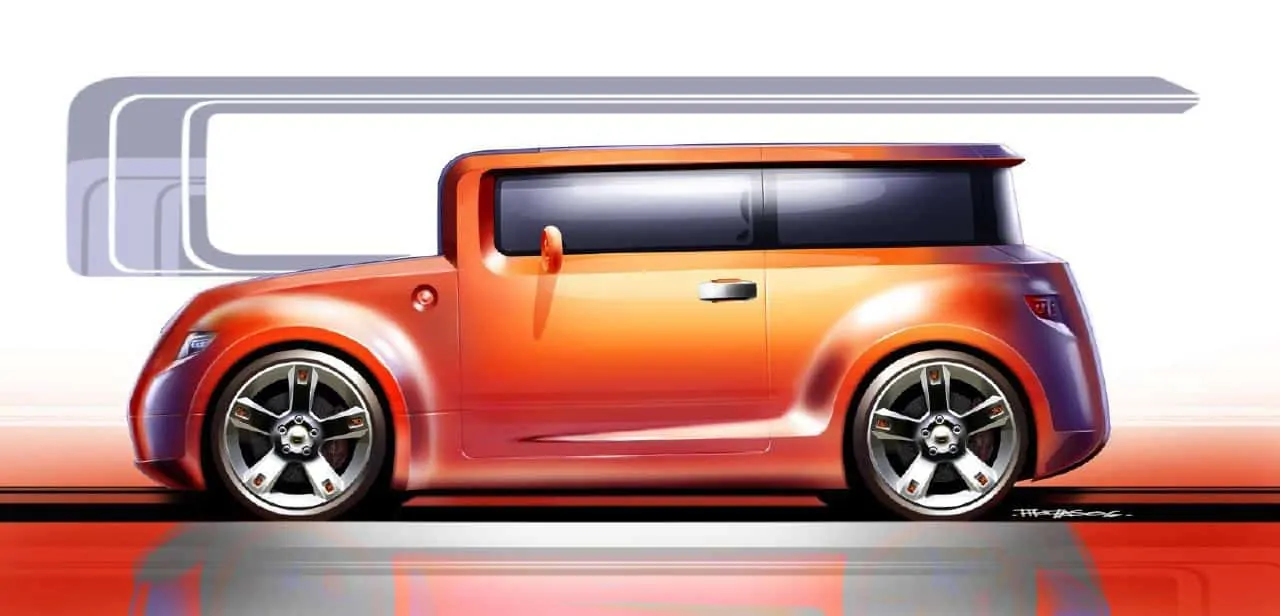Toyota decided to kill Scion today, marking an end to the offshoot automotive brand founded in 2002 to cater to the youth market in the United States. At its inception, parent company Toyota’s buying demographic was pushing 60 years of age and it needed to do something to become relevant to a younger crowd.
The first cars out of the gate were the xA and xB models, followed a year later by the tC coupe. The cars had low price points, which made them appealing to young people as well as an older demographic — an added plus — who were drawn in by clever marketing campaigns as well as the bullet-proof reputation of its parent company (Scion means ‘descendant of a family’, a nice touch).
By the end of the first generation of products Scion’s sales began faltering, and continued to do so for years. Dealers started dropping the brand left and right and Scion’s once avant-garde guerilla marketing campaigns were no longer as successful. While Toyota is using this fact to back its decision, the real reason for the rapid decline in sales comes from a lack of product investment.
Toyota’s decision to euthanize the brand is like kicking your kid out of the house because he isn’t doing well in school and nobody wants to be friends with him. Never mind the fact that you (his parents) only thought he was cool for a couple of years, then didn’t invest in him at all. You bought him used clothing from old people stores and tried to convince everyone that he wasn’t that bad.
In the end, the only people who talked to the kid were old people — not that there’s anything wrong with that.
But here’s the thing: Scion had potential. When they launched they had great products. They had great marketing. They had passion. Drive. Love. Ask any Scion owner and they will tell you that they loved their Scions. The original xB, xA, and tC were great, reliable, practical cars. They had endless options lists, which enabled Scion to tap the personalization trend way before its competitors. Somewhere along the way, though, Scion got stupid and released vehicles that just didn’t make sense for the market.
Scion was supposed to be the brand that took risks while Toyota stayed safe, but Toyota got scared of taking risks and started making all Scion designs ‘safe’. The 2006 Scion Fuse concept would have been so cool on the streets in its original form but it never made production, and the 2007 Hako — a modern take on classic American hot rods — was a stillborn concept as well.
Scion quickly became a brand of bland, boring and safe rebadges. Cars like the second-generation xB, the iQ and the xD were all badged Toyota in other parts of the world. Though the cars always shared some common elements with Toyota vehicles (the tC is an Avensis under the skin) as a cost cutting measure, badge engineering was never going to work with lackluster product. For a youth-oriented brand, Scion failed to push the envelope. Save for the FR-S (GT-86) — which, from a design standpoint, is about as safe as you can get for a sports coupe — the cars simply lacked the ‘want’ factor.
Back in 2007, PickupTrucks.com published an article claiming that the Scion Fuse was slated for production as a small pickup/trucklet called the xP, which would have been super cool given the ever growing size of compact pickups. But that never materialized either. And when you think the brand was initially sold in California, Scion could have also given us a cool roadster. Opportunities missed.
Toyota will spin it saying that there weren’t enough sales to justify a third company exclusive to the North American market, but that’s not true. Though the company sold a paltry 60,826 cars (including Canadian sales) in 2015, the company managed 173,034 sales (without Canada) in 2006 — when the brand had some decent product on the shelves.
It’s clear that there was room in the market for risky, fun and different vehicles. Toyota could have brought these to market with a little investment — seriously, how much money do you need to keep?! Like most bad parents, Toyota didn’t want to invest because they were afraid and didn’t care.
Let this be a lesson to those going into the auto industry: no matter how good an idea is for a vehicle or how great a design is, if you don’t have good leadership great design and great ideas can get buried fast. Scion was a great idea. And it got buried. Fast.
So long Scion.













